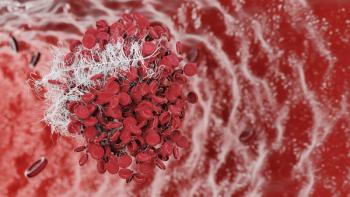
Human Genome Could Lend a Hand in Creating New Rheumatoid Arthritis Treatments
ACR session reinforces the need for new research about how the genome, epigenome, and other factors play a role in rheumatoid arthritis.
Additional research about how the human genome, epigenome, and environmental factors all impact rheumatoid arthritis and its progression is needed to keep advancing treatment options.
Gary Firestein, MD, professor, dean, and associate vice chancellor of Translational Medicine at the University of California, discussed how researching those factors can improve the lives of patients with rheumatoid arthritis at the American College of Rheumatology and Association of Rheumatology Health Professionals annual meeting.
Dr Firestein and his team of researchers have studied, at length, what genes and epigenetic factors contribute to the disease. They define epigenetics as heritable changes in genes that are not caused by DNA-related changes.
The researchers have specifically focused their studies on fibroblast-like synoviocytes in arthritis, and discovered that rheumatoid arthritis fibroblast-like synoviocytes are epigenetically imprinted early in the disease, and evolve with time. They also found that peripheral blood monocytes may be able to determine the epigenome of joints.
Genes such as PTPN11 and LBH have already been linked to rheumatoid arthritis (RA) through the use of genome-wide association research. Potential new treatment targets for the disease do not necessarily need to be genes, and could be related to the genetic signaling pathways.
Dr Firestein discussed methylome as a potential treatment target since they consist of nucleic acid methylation modifications in a cell of in an organism’s genome.
Through studies, the researchers have found that there are disease-independent and disease-specific differences in the fibrolblast-like synoviocytes in the knee compared with the hips. Disease-independent differences are linked to genes involved with differentiation, while disease-specific differences are linked to genes involved with cytokine signaling, according to the session.
“These differences could explain regional differences in RA joint distribution and asynchronous clinical responses to therapeutic agents,” he said.
Since researching new rheumatoid arthritis treatment targets is quite complex, and requires new computational approaches. Dr Firestein discussed how RNA sequencing of the transcriptome, whole-gene bisulfate sequencing of DNA methylation, and ChIP sequencing is necessary for creating a new generation of rheumatoid arthritis drugs.
Their findings also suggest that the RA epigenetic landscape is imprinted in fibroblast-like synoviocytes with chromatin states that can be discovered through DNA methylation, histome markers, and sequencing from open chromatin. These chromatin states can identify key pathways relevant to the disease, and potential treatment targets.
DNA methyltransferases and histone-modifying enzymes could also potentially be used to remodel RA chromatin states, according to the session.
They also believe that systems biology could be used to discover important interactions between signaling pathways that could be used to change RA fibroblast-like synoviocytes from an aggressive phenotype to a normal one.
“Systems biology can potentially be useful in evaluating potential targets. We are looking at combination approaches to revert the RA phenotype and identify novel targets,” Dr Firestein said. “We could possibly repurpose drugs with limited efficacy or toxicity in RA and take advantage of synergy.”
Next steps include expanding epigenetic studies to discover more genes linked to RA, and create novel biologic treatments to validate possible treatment targets.
Newsletter
Stay informed on drug updates, treatment guidelines, and pharmacy practice trends—subscribe to Pharmacy Times for weekly clinical insights.







































































































































































































